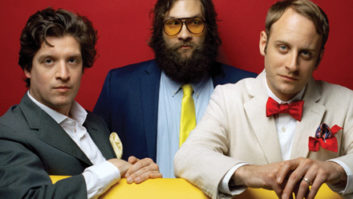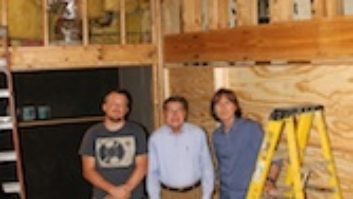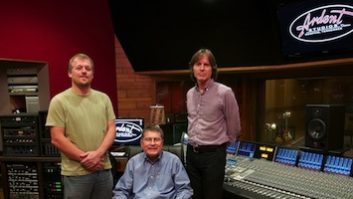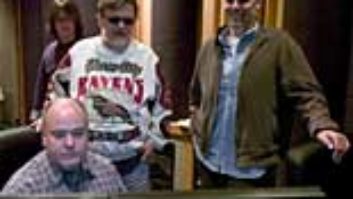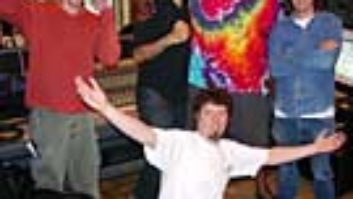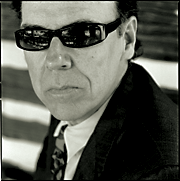
It was just a matter of time before John Hiatt would make an album in Memphis. With albums such as Crossing Muddy Waters and the raw roots classics Bring the Family and Slow Turning, there has always been a deep soulfulness at the core of his artistry.
When it came time to record his latest album, Master of Disaster (New West Records), Hiatt hooked up with legendary Memphis-based producer Jim Dickinson. In some ways, it was the completion of an idea that began in the late ’80s, before the making of Bring the Family, still Hiatt’s best-known work.
“We talked years ago about doing a record,” says Dickinson. “The first time we talked about working together, I was going to do it with [rock band] Hi Rhythm Section, which would’ve been a really good record that nobody would’ve liked but me. [Laughs] I think it’s lucky for Hiatt that he didn’t do that one, but that’s kind of what the song ‘Memphis in the Meantime’ [from Bring the Family] is about. He’s been thinking about coming here for that long, I’ll put it that way.”
“Bring the family” might also be an apt description for this album, too, as Dickinson’s sons Cody and Luther provide much of the musical backbone for Master of Disaster. Hiatt has known Dickinson’s sons from the time they were young kids absorbing their dad’s deep love for the expressive intersections of Delta Southern culture and music, and watched them playing punk rock and jug band music and ultimately evolving into superb players with their own critically acclaimed band, the North Mississippi Allstars.
Besides the Dickinsons, the album’s deep earthy pocket comes courtesy of Muscle Shoals Sound Rhythm Section bassist David Hood and Jim Spake (saxophone), Scott Thompson (horns), Tommy Burroughs (fiddle) and Dickinson on various keyboards.
One of the many highlights on Master of Disaster is “Cold River,” a brutally dry story about two self-absorbed hustlers on their way to Chicago from Dallas who ditch their illegitimate baby, Little Moses, in the river. “I don’t want to ruin it for you, but it has one of the most cold-blooded John Hiatt lines ever,” remarks Dickinson. “It’s probably the most amazing story on the record. Part of the quiet, stewing magic of the track is built on Cody Dickinson’s martial snare brushwork that is part influenced by his upbringing listening to the late, great Othar Turner’s North Mississippi Hill Country Revue fife and drum music. “Cody did this slow march thing very lightly…and it’s just something I don’t think anybody else would have done.”
Another track, “Back on the Corner,” sounds like Hiatt is backed by some old rag-tag Salvation Army Band. “I had Spake playing clarinet, which is always cool because he plays really lyrical, like Benny Goodman, and he’s perfect for Dixieland-sounding stuff,” says Dickinson.
For the title track (which leads off the album), Dickinson takes what could have easily been a stock roots singer/songwriter groove and brings it into the realm of an old sax-driven, Ace Cannon — flavored Memphis-style bar groover, while “Find You At Last” benefits from a whole soul horn section over a deep spare rhythm pocket.
There are moments where Luther Dickinson sounds like he is tapping into the essence of Teenie Hodges and the late, great Eddie Hinton. “On this one song, we were knocking Teenie off so hard that he showed up at the studio,” Dickinson says with a laugh. “The night guy called and said Teenie Hodges is here, and I said, ‘Of course he is!’ Teenie came in and we were listening to a playback and there was this big ole grin on his face so strong it just swells you up, and he came over and hugged me.”
Conceptually, Dickinson felt there was a geographical and historical thread happening in many of the several dozen songs Hiatt submitted. “Hiatt was interested in the idea of the American frontier as it moved East to West,” says Dickinson. “Although the Cumberland Plateau is represented, the bulk of the material is west of the [Mississippi] river. There is kind of an open, big sky sound that we were after, and I think we really got it. When you hear the record, you’ll be amazed at the space. It’s very Zen-esque. It’s a whole lot of air, and just when you think there’s nothing there, something slides in underneath you.”
To achieve that sonic vision, Dickinson, Hiatt and engineer/mixer John Hampton took advantage of an opportunity for the album to become the debut session using the first “real-world” multitrack DSD (Direct Stream Digital) recorder, the Sonoma 24, which was developed by Gus Skinas.
In the world of recording, DSD is a step some view as almost as significant as the move from analog to digital recording in the early ’80s. Instead of recording 24-bit words at a rate of 96,000 times a second, it records a very fast 1-bit sigma-delta stream at a rate of 2.8 million bits a second. It is a signal much more analog-like in sound and appearance, but it can still be digitally copied and processed.
“While there are some devices out there that can record multitrack DSD, the Sonoma 24 is the only one that can do this and provide the overdubbing and editing capabilities that everyone is used to, given the power of today’s workstations,” says Skinas, who was present for the Hiatt sessions.
Dickinson has always been a stickler for highlighting the spaces around the notes and capturing a palpable sense of place, even if it is a work of production fiction. From listening to Master of Disaster, it is clear that Skinas’ Sonoma multitrack system is a perfect complement for Dickinson’s conceptual sonic machinations in the studio. The system’s incredible headroom allows Dickinson to highlight those subtleties he cherishes.
“Even when you hear this down to regular 16-bit CD, it still sounds extraordinarily good,” says Dickinson, who notes that a surround version of Master of Disaster is also slated for release. “If you hear the full Sonoma recording of this, it’s just breathtaking. We sat there after the mixes were over and we would play it back and sit there with our mouths open. Hiatt, who doesn’t like anything, would say, ‘Well that sounds damn good!’”
“Everybody in the room was making comments about how great it sounded,” says Curry Weber, the Ardent staff engineer who worked the Sonoma system during the sessions. There was definitely a difference, and you heard things you don’t really hear with Pro Tools|HD and systems like that.”
One of the more interesting dynamics that took place during the session concerned Hampton having to rethink his mixing process at Ardent with the Sonoma. “The big plan was to get all the stuff in the Sonoma and then move to Studio B and mix it on the SSL — that’s how I normally do stuff. I cut in the C room and move to B and it’s like you’ve got a brand-new lens; everything’s crystal-clear,” says Hampton. “This is the first time that didn’t happen. We went to B and I started putting the mix together, and it just fought everything. The music fought the console. It fought the equalization, and after a day-and-a-half, we had to admit that all the warmth of the sound of the Sonoma system was being castrated by the console. It was the first time I’ve experienced it, so we decided to mix it back in C with the Neve in mixdown mode.”
Weber adds, “We tried to mix it in Studio B and discovered that there was a total headroom difference between the Neve and the SSL that we had never run into before, which the Sonoma exposed. The Neve was just more suited to handle the high output of the Sonoma.”
In conclusion, Skinas has this thought to offer: “When used in a state-of-the-art analog studio such as Ardent, the final product is free of the sonic restrictions one finds with typical digital production. This will be most obvious when John Hiatt’s new SACD is played on an SACD player that uses the same DSD technology to play back the recording. It will also be noticeable on CDs and MP3s, because the better the master, the better the final product.”
Hiatt has quite an impressive body of work, and Master of Disaster ranks with his finest albums, but sonically, none of his albums come close to this.
